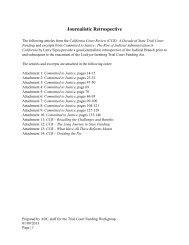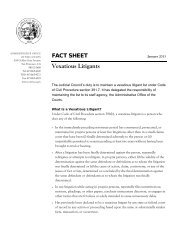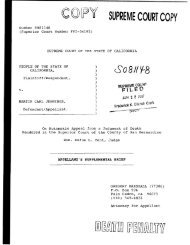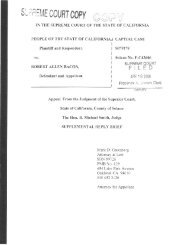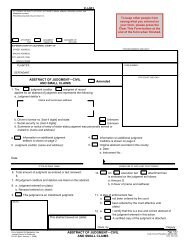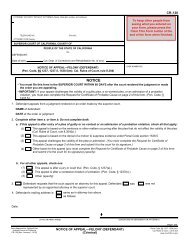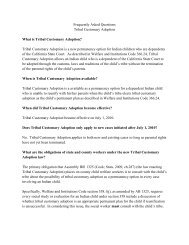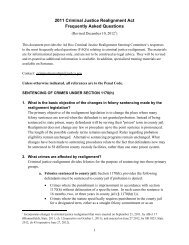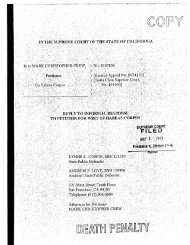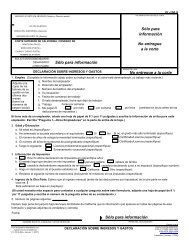Appellant, William Satele, Reply Brief - California Courts - State of ...
Appellant, William Satele, Reply Brief - California Courts - State of ...
Appellant, William Satele, Reply Brief - California Courts - State of ...
Create successful ePaper yourself
Turn your PDF publications into a flip-book with our unique Google optimized e-Paper software.
D. The Prosecutor Committed Misconduct By Presenting Factually<br />
Inconsistent Arguments At The GuiltlInnocence And Penalty Phases<br />
Respondent denies that the prosecutor committed misconduct when, at the<br />
guilt phase, he argued "that both appellants were surely involved in the shooting<br />
murder," while at the penalty phase he "point[ed] out to the same jury... that the<br />
evidence tended to show what one particular co-defendant was more likely the<br />
actual 'shooter' or killer." (RB at p 142.)<br />
This is not what happened. It is not true that the prosecutor merely argued<br />
at the guilt phase that both defendants were "involved" in the murders, and then<br />
later argued that appellant was the likely shooter. Rather, at the guilt/innocence<br />
phase that he expressly stated that he did not know and had not proven who fIred<br />
the shots. Later, at the penalty phase he argued that appellant was the shooter.<br />
(14RT 3214, 3222-3223, 17RT 4293-4295) In fact, at the penalty phase he<br />
specifIcally designated the roles <strong>of</strong> the three people in the car stating that<br />
Caballero was the driver, Nunez the lookout, and appellant the shooter, the three<br />
roles which the prosecution's gang expert, Julie Rodriguez, explained were typical<br />
<strong>of</strong>a drive-by shooting.<br />
Thus, the prosecutor changed his position from stating at the guilt phase<br />
that he did not know and had not proven who fIred the shots to stating at the<br />
penalty phase that appellant was the only shooter and Nunez was the lookout.<br />
Contrary to respondent's argument, these are completely inconsistent positions.<br />
Respondent further argues that "the jury in this case was not required to<br />
unanimously agree on which appellant was the "shooter" and which appellant was<br />
the "aider" as long as the jury found each appellant guilty beyond a reasonable<br />
doubt <strong>of</strong> liability for being a shooter as defIned by the gun-use statute. (RB at p.<br />
143.)<br />
While it is certainly correct that jury was not required to make a fInding at<br />
either stage as to who the shooter had been, that does not give the prosecutor<br />
106



